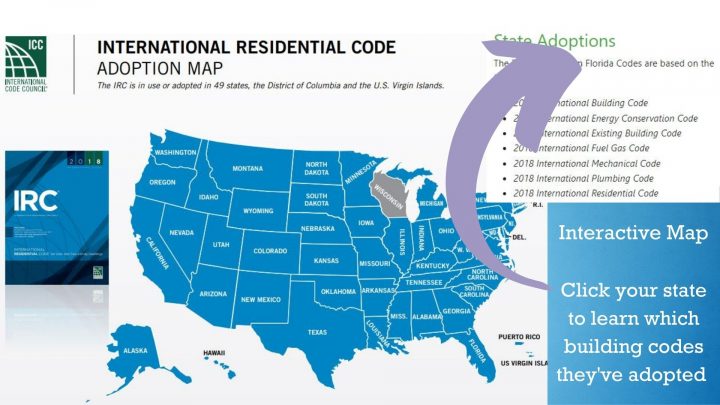Our world is changing, our lives are changing. This series of articles will explore how climate change will affect home values, home construction and our lives. The challenge is huge due to the number of players involved. They must work together in order to improve American lives … while meeting their individual organization goals.

So we begin our series on climate change and home construction, by looking at all the groups involved. It's far more complicated than you expect … so join us in learning how changes happen and where we as homeowners, can influence tomorrow's housing industry.
Table of contents

Builders Need to Make a Profit
Builders are in the business of developing communities and building houses for a profit. While building a house is pretty straight forward, builders have to juggle many competing priorities on a day-to-day basis. Here are the constraints they deal with:
- Acquiring land and developing the infrastructure to bring utilities (water, electricity, gas and phone/cable/Internet) to the houses they plan to build.
- Working with local local building departments to get house plans approved, ones that demonstrate that they'll meet local building codes.
- Selecting products and building materials they believe will sell at target house prices while delivering desired profitability.
- Negotiating volume pricing for products, materials and labor to build the houses.
- Day-to-day project management of houses under construction, from breaking ground to closings.
- Marketing and sales to home buyers from selecting a floor plan, lot and picking upgrades at the builder's showroom.
Home buyers only see the last two steps in this process. While production builders can complete a home in four to 6 months (mine took 9 months pre-pandemic), the earlier steps to prepare a community can take several years.

Building Codes Define the Rules for Home Construction
There are two different, yet similar model building codes used in the US. They're called model codes because they're not official until adopted by individual states and/or counties, who may modify them with additions and/or deletions of provisions within the codes.
- The International Residential Code (IRC) covers the design and construction of one- and two-family dwellings and townhouses that have no more than three stories above grade.
- The International Building Code (IBC) covers all other structures, from buildings where people live to business skyscrapers and industrial plants where products are manufactured … and I laughed when I found the new Applying the Codes to Cannabis Facilities publication.

Both codes focus on health and safety requirements to protect the public. They also try to avoid unnecessary costs although that's being challenged as government agencies try to make buildings more energy efficient, environmentally sustainable and resistant to natural disasters. While important to homeowners, these goals increase building costs which many builders resist to remain competitive and profitable.
International Code Council (ICC) Creates Building Codes
But who has input into our building codes? Many stakeholders are involved so here's a snapshot of who can propose changes to the codes – government agencies, builders, manufacturers and more (see below). Proposed changes are reviewed and voted on before they're published.

Digging into the building codes isn't for the faint of heart. If you've ever tried to research the codes, you've discovered there are many different documents … 15 IBC publications. They're the most widely accepted model building codes used in the United States, having been adopted by all fifty states, the District of Columbia and many other countries.
Some of the more interesting code books include the:
- International Energy Conservation Code sets minimum efficiency standards for new construction for a structure’s walls, floors, ceilings, lighting, windows, doors, duct leakage and air leakage.
- International Existing Building Code encourages the use and reuse of existing buildings, covering repairs, alteration, additions and change of occupancy for existing and historic buildings so they're safe without having to fully comply with new construction codes.
- International Green Construction Code sets criteria for energy efficiency, resource conservation, water safety, land use, site development, indoor environmental quality and building performance that can be adopted broadly.
- ICC Performance Code enables builders to satisfy building codes by evaluating the whole house versus making each building component comply. For example, my house uses less energy (entire house) than the same building built to prescriptive codes for each item … but sorry, I will always call Florida approved brown paper bag/aluminum foil “pretend insulation”.

How Building Codes Are Adopted by Local Government
It is up to individual states and counties to review and adopt the codes. They're able to add/alter requirements in the model code or delete them to customize their building codes to fit their environment.
The ICC has an adoption map that shows which states have endorsed each of the 15 codes. An interactive map is available where you can click on your state to learn more specifically, which of the individual codes have been adopted (Florida shown in upper right corner of the map above). In addition to the 7 adopted codes listed, the green construction code and property maintenance codes are voluntary for cities and counties.

Manufacturers Need Pushing to Evolve
It would be great if everyone felt the need to continually innovate, to improve what they do from manufacturing new products for the home to tools that make painting and cooking easier. Unfortunately that's not the case with most companies, which is why some very successful companies like Kodak (cameras and film) and Block Buster (movie rentals) no longer exist.
When I owned my handyman business, I saw first hand how the federal government forced key changes in products we use every day … so keep reading.

Federal Laws Drive New Product Requirements to Support Climate Changes
Thomas Edison wasn't the inventor of the electric lightbulb (read: History of the Light Bulb) but he was the first one to create a commercially viable light bulb. Thus in 1880, the Edison Electric Company began marketing a bulb using a carbonized bamboo filament that could last over 1200 hours.
While there were minor improvements to these incandescent light bulb, they remained energy inefficient because less than 10% of electrical power generated was converted into visible light. It took government mandates to drive manufacturers to introduce more energy efficient options like today's compact fluorescent lights (CFLs) and LED bulbs. Initially there was resistance to the new bulbs due to cost, delays in lighting and concerns about mercury contamination with CFLs.
Costs have come down with increased volumes and today, LEDs are not only accepted, they are changing how we use lighting in our homes (read: Surprising Ways LEDs are changing Lighting).

Consumer Demand Can Accelerate Adoption of New Products
Sometimes it's consumers who ultimately drive changes in how our homes are built. To reduce energy consumption and climate changes, the US government has offered solar incentives for years. Now that we've achieved momentum, those incentives are about to expire so … learn more about the Federal Tax Credit for Solar Photovoltaics if you've thought about installing solar.




Very thorough post, and great information. We are going to be investigating solar panels for our home soon.
Thanks Michelle, If you’re able to keep a log of your solar journey & take photos too, I’d love to share here with link back to you. There are 2 other articles you should read too … about roofing, as it’s risky putting solar panels over an old roof.